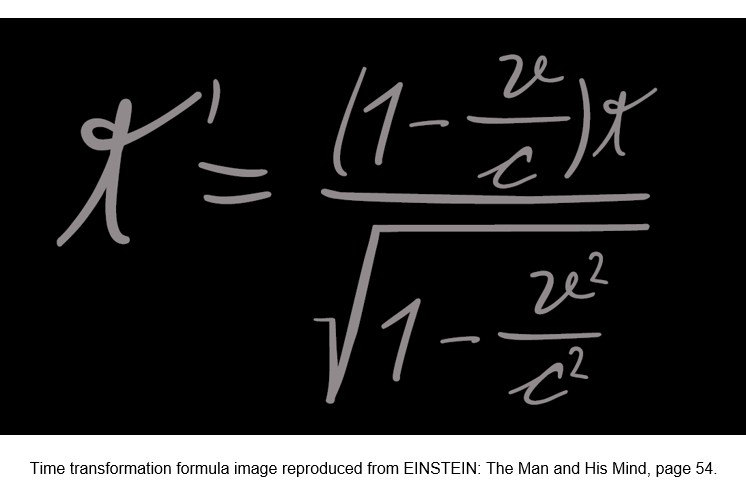
Albert Einstein radically changed our understanding of time. His theory of relativity replaced Newton’s concept of time as universal and constant. Einstein proposed that time is a dynamic and malleable physical dimension rather than a backdrop against which events occur. This transformation in our conception of time is a cornerstone of modern physics and a profound philosophical shift.
Time in Special Relativity
As a twenty-six year old patent clerk, Einstein startled the world of physics in 1905 by revealing that time is not absolute but varies according to one’s speed. Special relativity theory introduced the concept that time passes at different rates for observers in different states of constant motion with respect to each other. Einstein articulated this in his foundational paper, “On the Electrodynamics of Moving Bodies,” where he proposed that “if at the points A and B of K there are stationary clocks which, viewed in the stationary system, are synchronous; and if the clock at A is moved in a closed curve with constant velocity until it returns to A, the journey lasting t seconds, then the two clocks no longer synchronize.”
In Einstein’s theory, time is the fourth dimension in a four-dimensional spacetime continuum in which events occur within a network of coordinates (three spatial and one temporal). This representation of time as a dimension emphasizes its physical reality on par with spatial dimensions.
The Curvature of Spacetime
Einstein expanded relativity theory to include gravity (accelerated motion) in the spacetime framework in the general theory of relativity, which he published in 1915. According to general relativity, matter bends spacetime, and a gravitational field causes time to slow down. The nearer to massive bodies, the slower time passes. Einstein famously encapsulated this startling concept in the phrase, “Time and space and gravitation have no separate existence from matter.”
As strange as relativity theory seems, it has been confirmed in every test or experiment that has been performed. When a journalist asked Einstein what he would do if his theory were proven wrong, Einstein confidently replied, “Then I would feel sorry for the good Lord. The theory is correct.”
Time Dilation Confirmed
The effects of velocity and gravitational fields on time, as Einstein predicted, have been confirmed to extremely high degrees of precision by atomic clocks flown on commercial airliners, in spacecraft, and satellites.
Global Positioning System (GPS) satellites provide a practical and ongoing demonstration of time dilation. GPS satellites orbit Earth at high speeds and weaker gravitational fields than on the ground. The clocks on GPS satellites are adjusted to account for the effects of speed and gravitation to ensure they remain synchronized with clocks on the ground. Without accounting for the effects of time dilation, GPS systems would quickly become inaccurate, leading to errors in navigation and communication.
Time and Subjective Experience
Although Einstein regarded time as a physical dimension, he recognized the subjective experience of time, which often differs from its objective measurement with clocks. To illustrate the difference between subjective time and clock time, he lightheartedly said, “When a man sits with a pretty girl for an hour, it seems like a minute. But let him sit on a hot stove for a minute and it’s longer than any hour. That’s relativity.”
Philosophical Implications of Time Dilation
The notion that time varies depending on velocity and gravitational fields—contradicts our common sense notion of time as being the same everywhere. This shift profoundly affects how we conceive of time, space, causality, and the fundamental structure of reality.
Time dilation undermines the notion of absolute simultaneity. In classical physics, events that are simultaneous for one observer are assumed to be simultaneous for all observers. However, relativity tells us that simultaneity depends on the observer’s frame of reference. As a result, two events that appear at the same time to a stationary observer may occur before or after each other for observers traveling in opposite directions relative to the stationary observer.
In classical physics, causality is thought to proceed linearly, with each event leading inevitably to the next in a chain of cause and effect. Relativity suggests that “now” is not universal but observer-dependent, challenging our intuitive understanding of cause and effect.
The recognition that time can pass at different rates in different reference frames also means that two observers can experience different durations for the same period. This leads to the so-called “twin paradox,” where one twin who travels at relativistic speeds ages more slowly than the other twin who remains stationary. This asymmetry is in stark contrast to our intuitive sense of time as a universal clock.
Einstein commented on the philosophical implications of his theories, particularly in his later years. His view was that past, present, and future are intertwined, which suggests a block universe where the linear progression of time is a fallacy of human perception. Remarking on the death of his best friend, Michele Besso, Einstein said,
“Now he has departed from this strange world a little ahead of me. That means nothing. People like us, who believe in physics, know that the distinction between past, present, and future is only a stubbornly persistent illusion.”
Learn more about EINSTEIN: The Man And His Mind.
